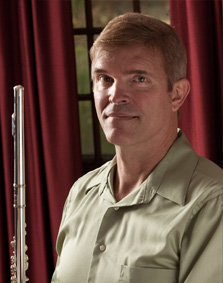Most of the flutists that are purchasing new flutes tell me that they have a sense that their current instrument is holding them back, or that they are not able to grow musically with the instrument they have.
In some cases the head-joint is to blame. Some of the complaints include lack of a full dynamic range, an overly bright one dimensional sound, difficulty slurring between octaves and sluggish articulation.
In other cases a flutist discovers that their finger technique has improved and their mechanism cannot keep up with their fingers.
Some flutists get tired of struggling with an outdated scale which can make the instrument difficult to play in tune, especially with musicians having flutes with more sophisticated scales. Additionally, flutes manufactured before 1980 usually have scales tuned to A=440. Since then, thanks mostly to the influence of orchestra conductors who like the brilliance of a string section tuning to a higher A, flutes are manufactured with the new standard of A=442.
Some flutists decide that they are tired of a flute that goes out of adjustment frequently and want the reliability and stability of a handmade mechanism and Straubinger pads. ( Available on some makes of handmade flutes. )
Some flutists are interested in making the transition to a flute with optional mechanisms like a C# trill key, or a D# roller.
Whatever the problem, or combination of problems is, a new flute can give the developing and seasoned flutist the tools to grow as a flutist and a musician.
The more silver, the better the sound.
The density and hardness of sterling silver ( 92.5% pure silver ) creates the most beautiful, flexible sound for the vast majority of flutists. As a flutists ability improves, they should have an instrument that has some silver content.
Unfortunately, the more silver, the higher the price, but the difference in performance is clearly better.
Superior head-joint design and hand cut embouchure holes.
As a flutists embouchure develops, they need a flute with a more sophisticated hand cut, embouchure hole design. This produces a faster response, better tuning, a wider dynamic range, a darker, more refined and beautiful sound and a larger palette of tone colors.
Customizing the embouchure to the right head-joint design.
Some of the better quality flute brands will offer as many as four distinctly different head-joint designs. ( See this description of some of the head-joints we carry. ) Flutists have many different ways of forming an embouchure, depending on the shape of their lips, teeth and jaws. The different embouchure hole designs allow the flutist to customize their embouchure to the right kind of head-joint and achieve much better results musically!
A handmade mechanism built with precision.
A precisely made mechanism will allow a quicker response and fewer repairs. More importantly, a handmade mechanism does not allow any looseness or “side play” in the mechanism and assures that the pad comes down on the tone-hole in exactly the same place every time, insuring a good air seal. Click here to see my article on handmade vs. machine made flutes.
A flute that plays better in tune (with a well designed “scale”).
All flute companies use their own “scale” and some are definitely better than others. The “scale” of a flute means how it plays in tune with itself and with other musicians. The scale is determined by the design of the head-joint and the size and placement of the holes in the flute tubes. The flute companies making handmade flutes have produced superior scales, which allows the flutist to stay in tune with ease.
Optional mechanisms available.
C# Trill – The C# trill permits better tone and pitch on open C# and makes numerous trills and tremolos much easier, especially in the upper octave. Click here to see my article on the C# trill.
Heavy Wall Tubing – A small percentage of students may see improvement in their sound by selecting flute tubing made slightly thicker, which can produce a darker, more powerful sound.








